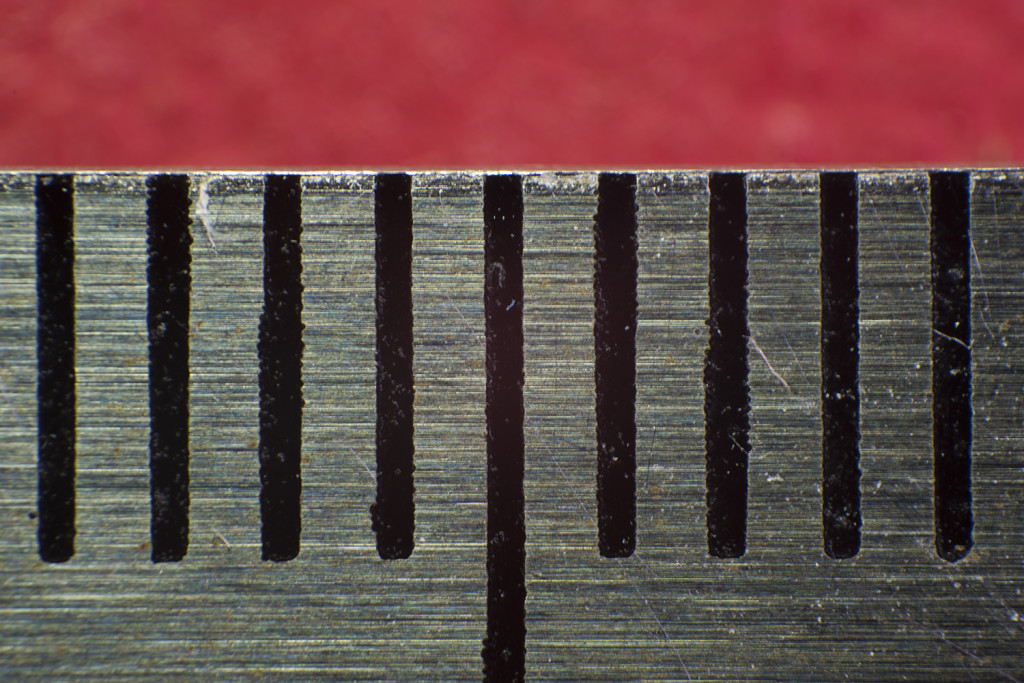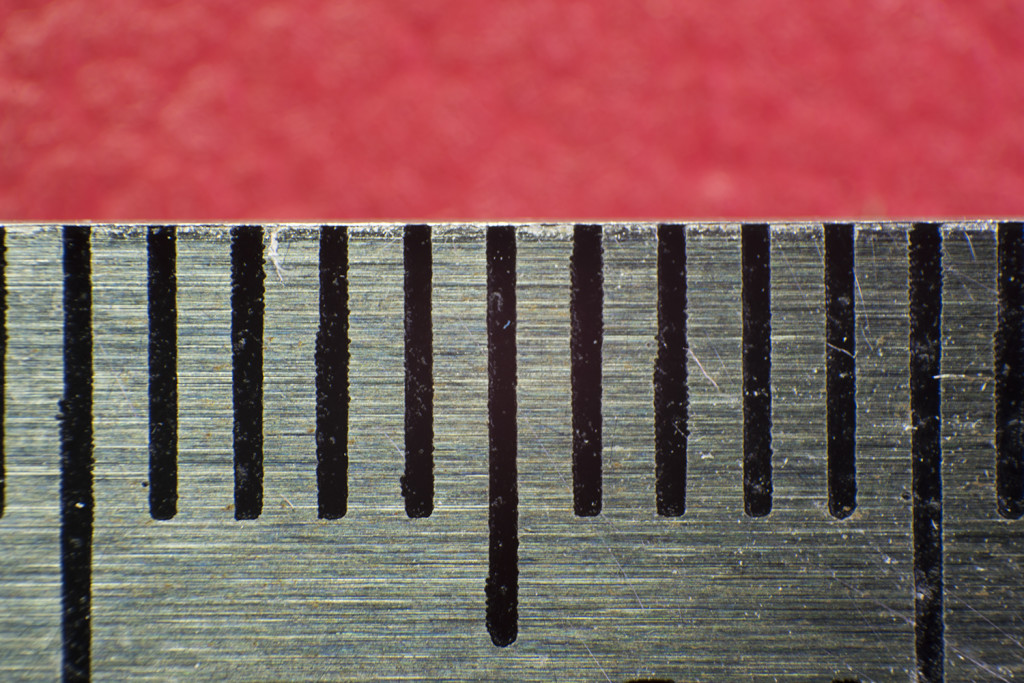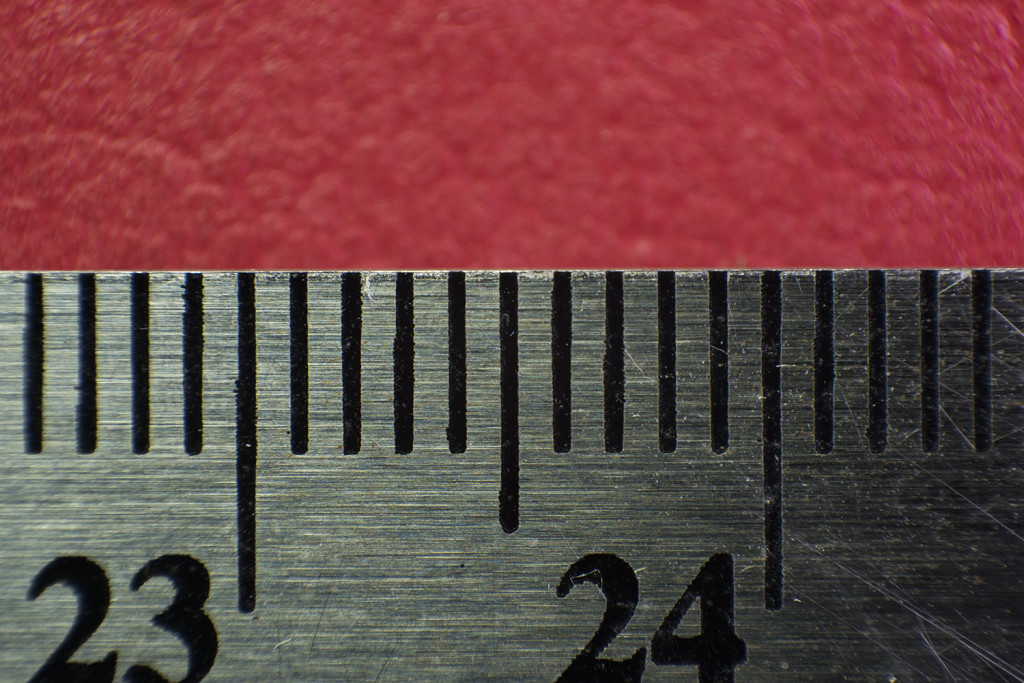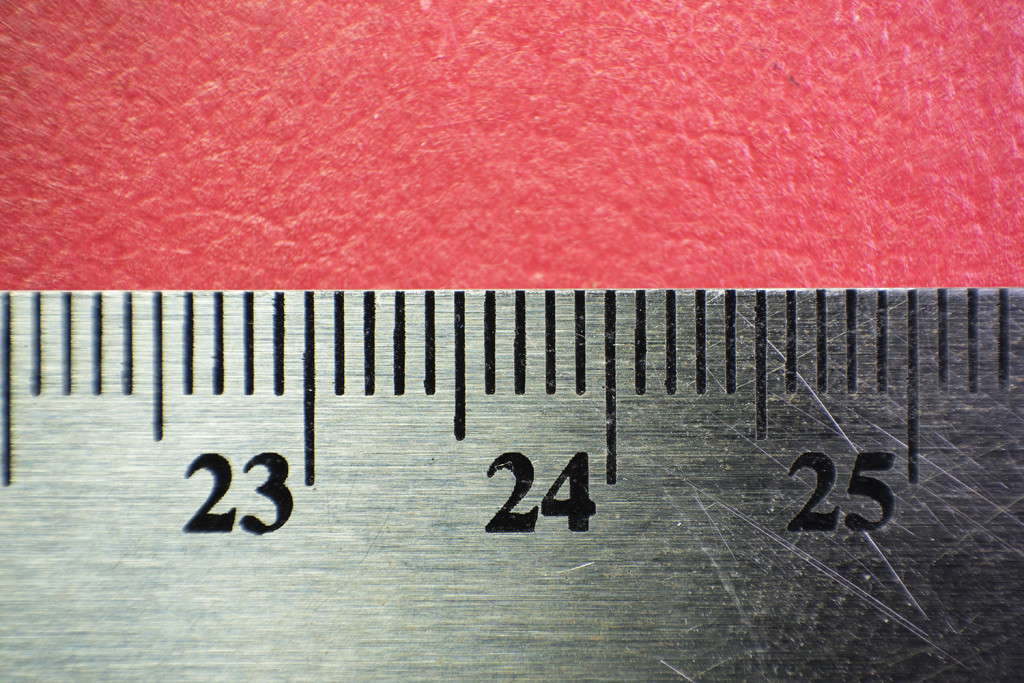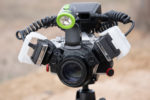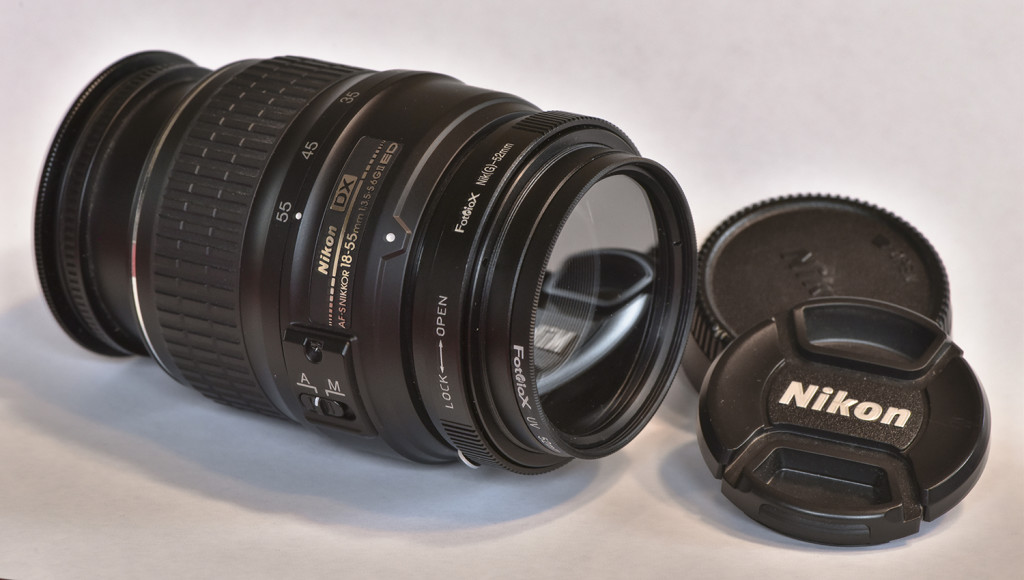 Nikon AF-S DX NIKKOR 18-55mm f/3.5-5.6G ED II Zoom Lens (non Vibration Reduction)
Nikon AF-S DX NIKKOR 18-55mm f/3.5-5.6G ED II Zoom Lens (non Vibration Reduction)
As a ubiquitous kit lens bundled with many of Nikon’s DX cameras, you might already own one and not realize the powerful macro tool that you have. I had one lying around from years ago that I’d forgotten about. They can be had for literally a few bucks on Craigslist and at pawn shops. If you want to purchase a new one, the latest model has an improved focus ring, but it’s still inexpensive as far as lenses go.
Most of this article applies to most any small zoom lens. The bottom line is that if you already have a wide-angle zoom lens sitting around, you’re equipped for super high magnification macro photography.
Why is the Nikon 18-55mm useful for Ultra Macro Photography?
When reversed, smaller focal lengths (wide angle lenses) yield higher magnification. At 18mm, this lens can achieve powerful magnification of almost 4:1 (it’s actually 3.5:1 to be exact, but that reads poorly). How strong is that? At 4:1 a house fly will barely fit in the frame, where with a regular 1:1 macro lens, the fly would only be in the center of the frame with lots of space around it. There are many configurations to reach such magnification, but many are expensive, heavy and cumbersome. Reverse mounting a small lens like this is perhaps the cheapest and lightest way to achieve high quality 4:1 magnification.
But this lens offers more than just high magnification. Being a zoom, you can select the level of magnification if 4:1 is too strong. At 55mm its magnification ratio is exactly 1:1 like a standard macro lens. A reverse mounted ultra wide zoom like this comes close to offering the flexibility and performance of Canon’s renowned MP-E 65mm Macro Lens. In fact, add an extension tube and you can achieve 5:1 magnification just like the Canon, but without auto aperture control.
The loss of auto aperture control is the drawback when reverse mounting any lens. And because this is a modern Nikon “G” lens, it also lacks a manual aperture ring to control the f-stop. This means that without a work-around, the lens it will be stopped down to f/22, which doesn’t let in enough light to see anything through the viewfinder. Don’t worry, the solution is below.
How’s image quality? Admittedly, I didn’t expect the glass to be very resolute on this bargain basement lens, however I was proven wrong. IQ is great, at least when reverse mounted. Sharpness nearly equals that of my reversed Nikon 24mm f/2.8. Because the 18-55mm is a zoom lens and not a prime, it does have some edge distortion, and bokeh isn’t quite as smooth.
How can such a cheap lens be oh so good?
Ironically, the qualities that make the 18-55 cheap for normal photography are why it’s well suited for super macro. How’s that? It’s a no frills lens that lacks vibration reduction, a large max aperture, focus scale and long zoom range. By excluding such features that are desired for regular photography, but useless to reverse macro photography, the lens stays small and light. As mentioned, when reverse mounted the “zoom” becomes a magnification selector. This makes field shooting fast and efficient where you would be switching between subjects of various sizes. This lens can also be mounted on any camera brand or format when reversed.
How to use
For the latest version of this lens the following step is supposedly not needed, but I haven’t personally tested it. First, focus to the lens’ minimum focus distance (so the lens is all the way “out”) and then set the selector switch from “M” to “A” to lock focus in place. Otherwise when reversed, the focus barrel will twist wildly with just an accidental touch. Remember, for reverse mount macro photography you don’t use the lens’ focus anyway because it’s better to move the camera back to achieve focus.
When you reverse a lens you lose infinity focus, which means everything will be completely out of focus until you get extremely close to your subject. To choose magnification strength, zoom between 18-55mm. 18mm gives the strongest 4:1 magnification, and 35-55mm is good for general macro shooting. In the field, regularly capturing images at 18mm that are in focus will require much practice because depth of field is about as thin as a thread.
Equipment Needed
Fotodiox 52mm Reverse Mounting Kit with Aperture Control Ring: Fix for no Aperture Control
As stated above, reverse mounting eliminates the camera’s auto connection, so you lose auto aperture control. And because this is a Nikon “G” lens, there is no manual aperture control ring. The lens as such will be permanently stopped down to f/22, which is too dark to see anything through the viewfinder. The fix is the Fotodiox 52mm Reverse Mounting Kit with Aperture Control Ring. For only about $30 it includes everything you need: a reverse 52mm mount adapter, the aperture control ring, and even a 52mm clear filter that screws onto the aperture control ring to protect the exposed rear element. The Fotodiox control ring is not perfect. It doesn’t set the aperture in precise f/stops, so there’s a bit of guesswork in which f-stop you’re at. It also doesn’t open this lens’ aperture to it’s widest f-stop, rather, it stops at around f/8. That’s where image quality is best anyway, so I personally just leave it there.
You can find the equipment discussed in this article here:
–Fotodiox 52mm Macro Reverse Ring Kit with Aperture Control
–Nikon 18-55mm lens
Free Aperture Control Hack
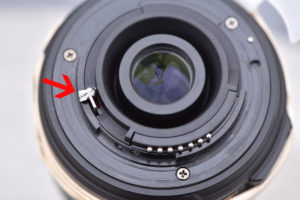
Instead of an aperture control ring, material can be jammed into this slot to keep the aperture from closing down to f/22.
If you only ever shoot at one particular f-stop, then you don’t need an aperture control ring. For example, because image quality gets significantly worse at small apertures when a lens is reverse mounted, I rarely shoot smaller than f/8. If that’s the case for you, then you can simply jam a piece of material into the aperture control slot to keep the bayonet from closing all the way. You’ll have to estimate the f/stop. A piece of aluminum foil works well.
Magnification Test Results
For these test shots I reverse mounted the Nikon 18-55mm lens to a Nikon D810 body using the Photodiox 52mm reverse mount ring with aperture control. Aperture was set to approximately f/8 (because exact f-stops cannot be set). A macro focus rail was used to achieve precise focus. The subject was 12 point font on a piece of paper. To ensure image sharpness, I used mirror lockup and a remote wireless shutter release. Images are unedited and shot in RAW.
The images below are full resolution 36 mp files to show true resolution.
@18mm:
@24mm:
@35mm:
@55mm:
Magnification Ratios
Magnification ratio is calculated so: (Sensor Size mm)/(mm in frame) = magnification ratio. In this case the camera’s full frame sensor used in this test is 36mm in width.
- @18mm 3.5:1 magnification
- @24mm 2.3:1 magnification
- @35mm 1.75:1 magnification
- @55mm 1:1 magnification

